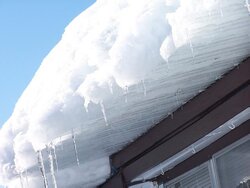I have downloaded the manuals for the duravent line of Pipe and acc. and cannot see how one can gain the neccessary clearance to the combustible ceiling, with out putting a short piece of HT chimney pipe just below the ceiling support. I will be using DVL pipe so my clearances will be 6". But if the ceiling drywall is cut 2" all around the Ht chimney pipe ,doesn't that put the top of the stove pipe to close to combustibles , even with the adapter trim ring? Or is the bottom and top of the ceiling support threaded to accept HT pipe above and below. I have trusses on a 2/12 roof and they are not exactly 24" on center...but fairly close.
Thanks all, Joe
Thanks all, Joe


